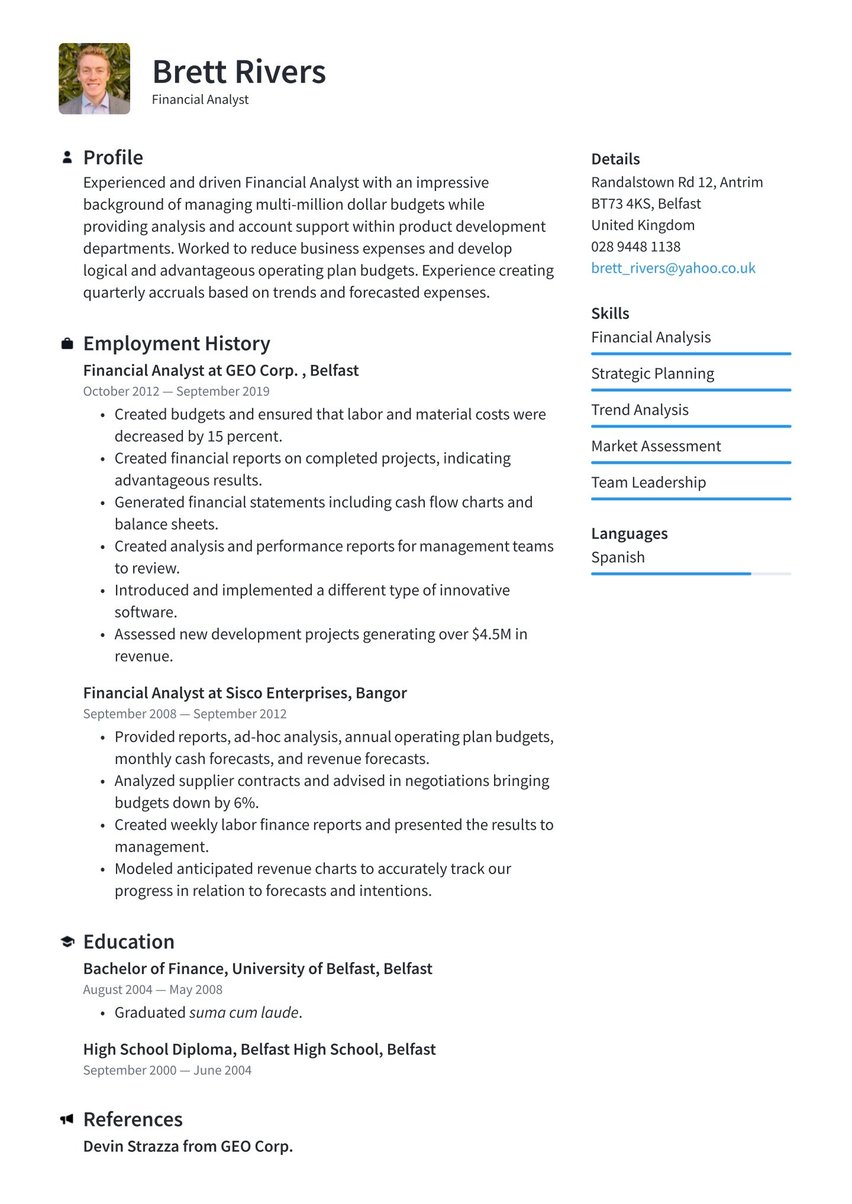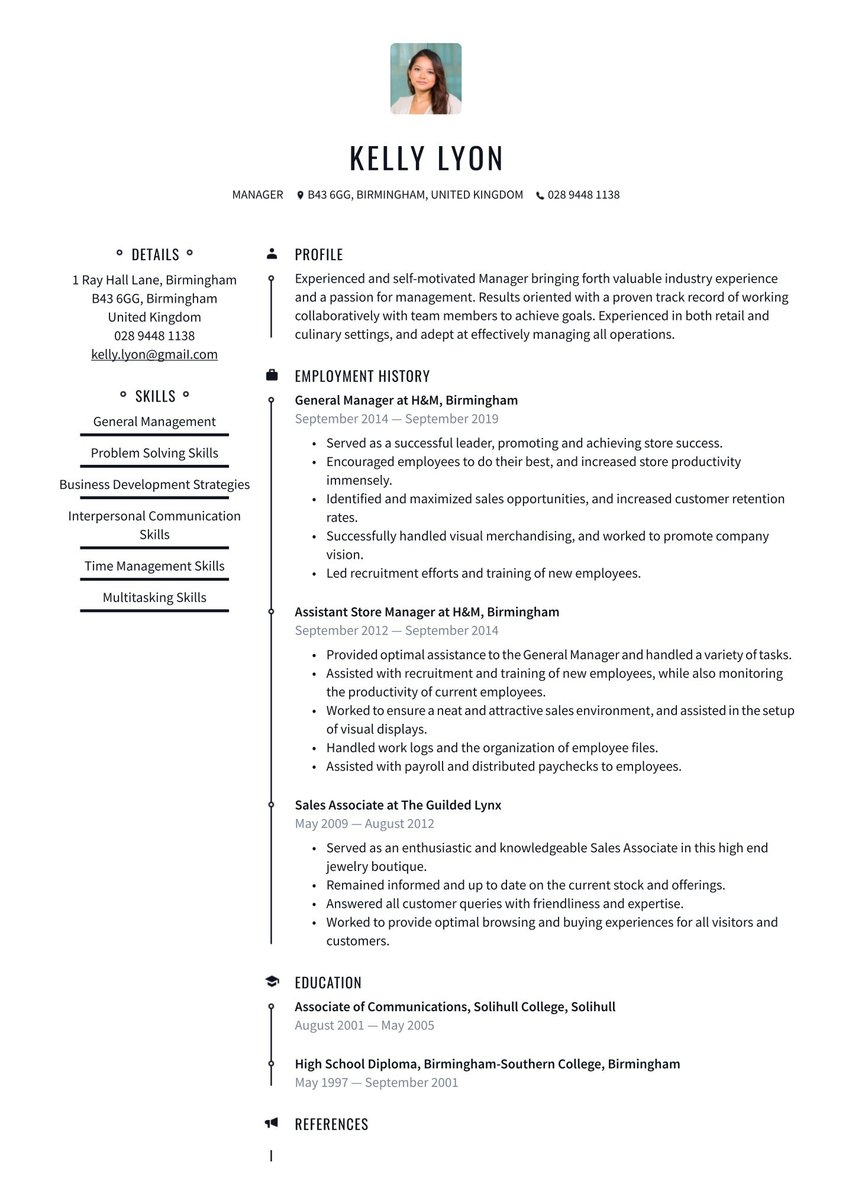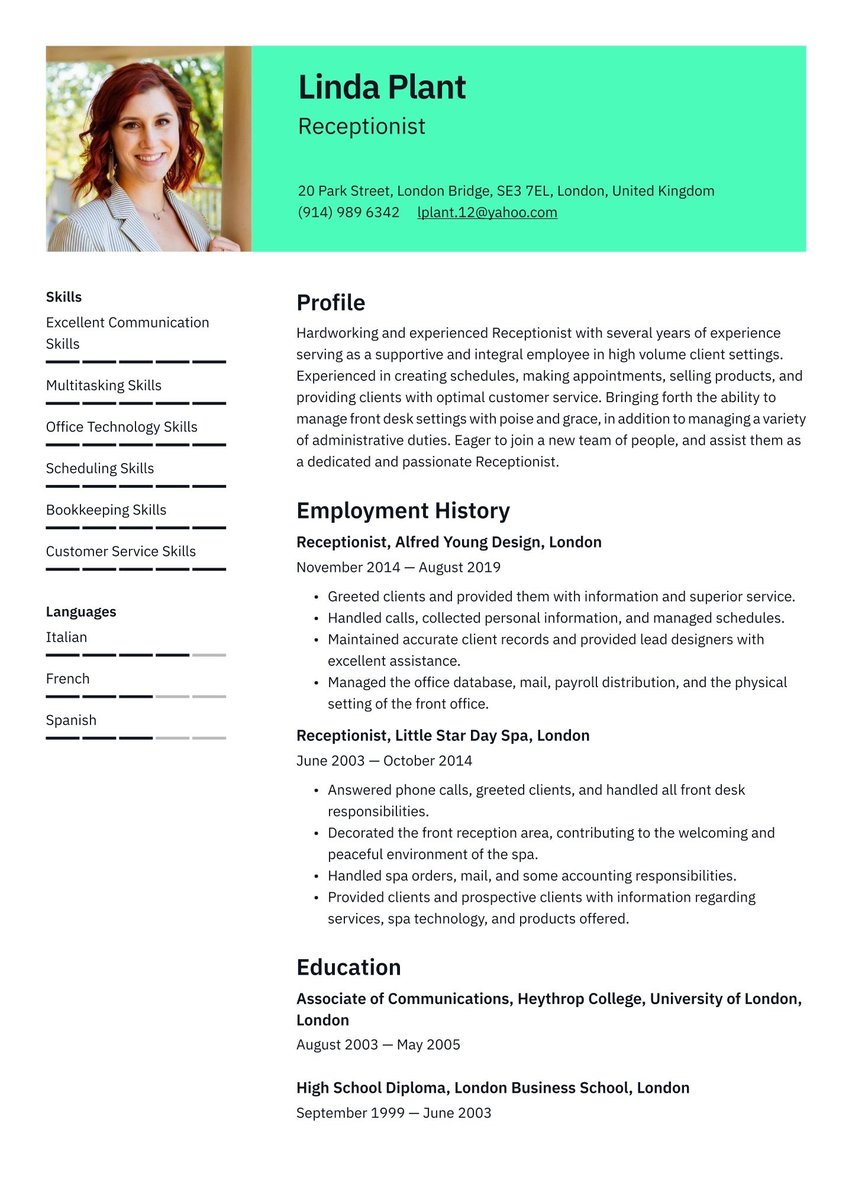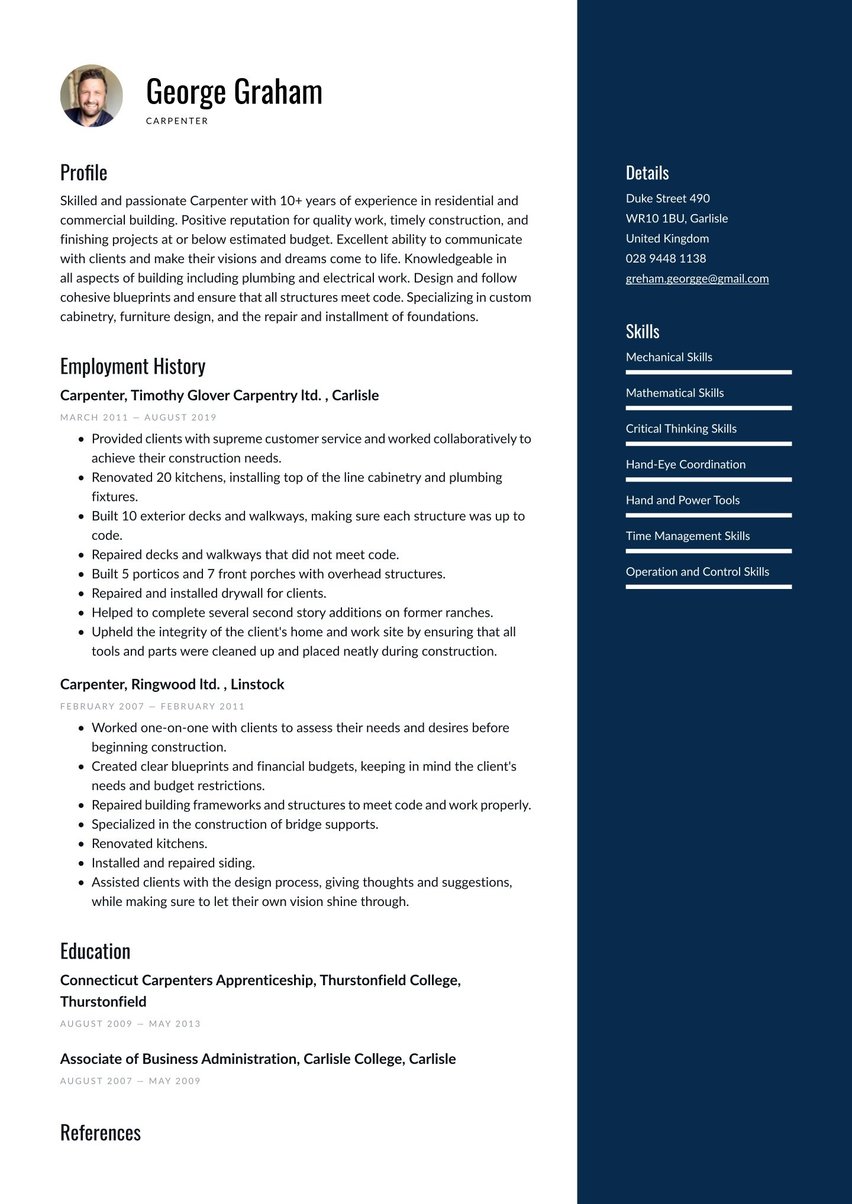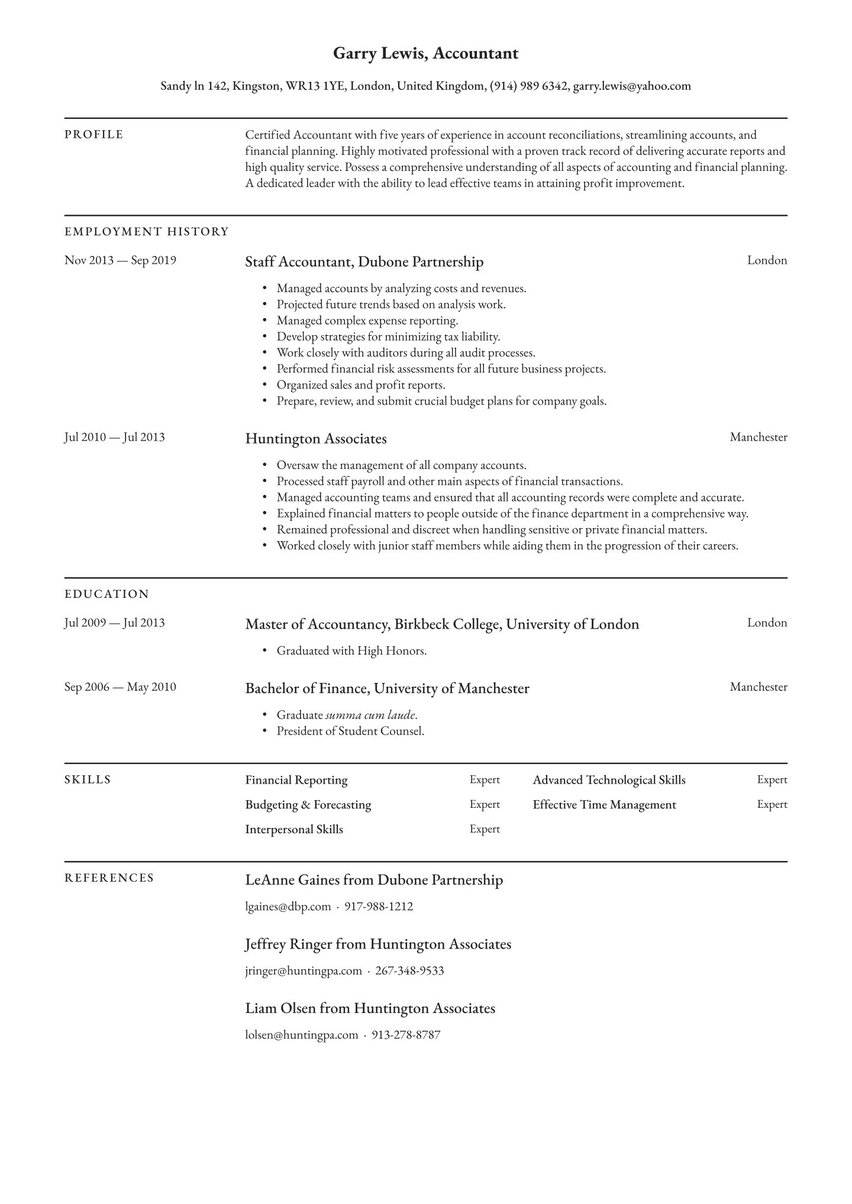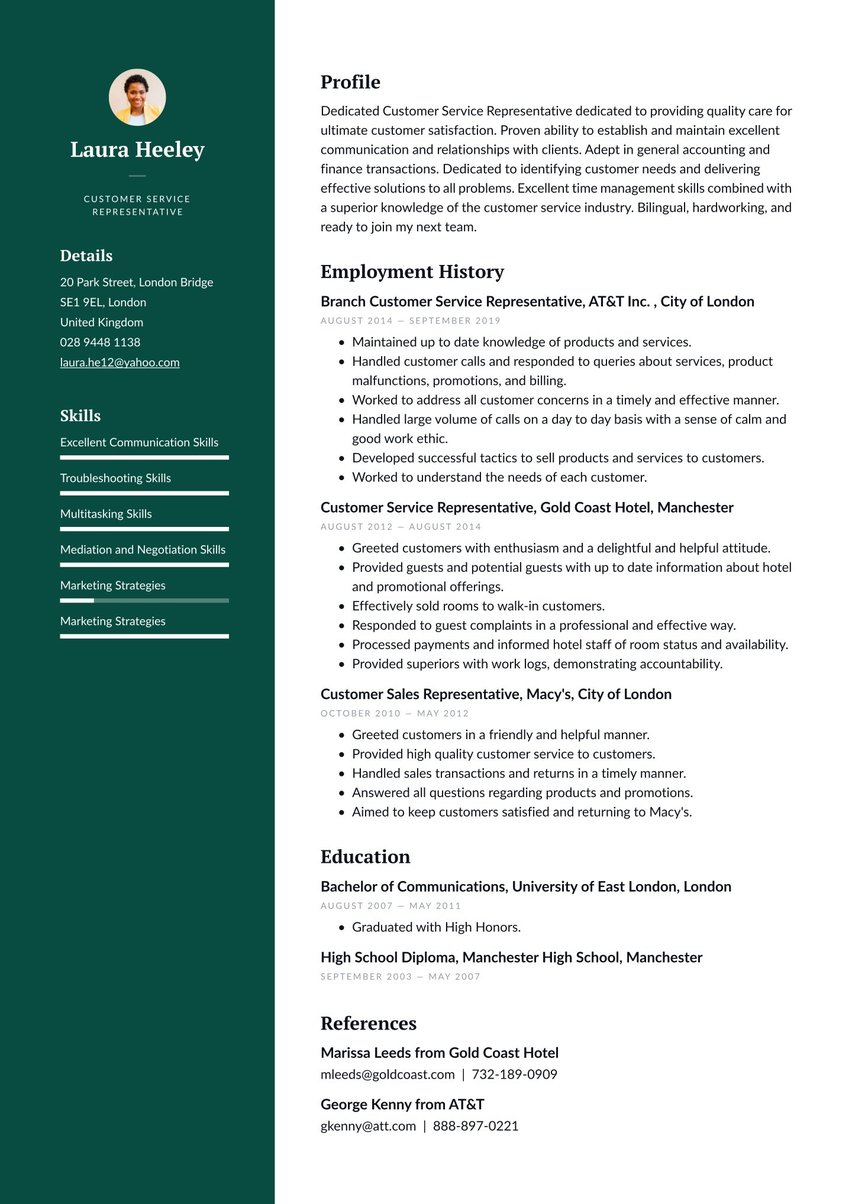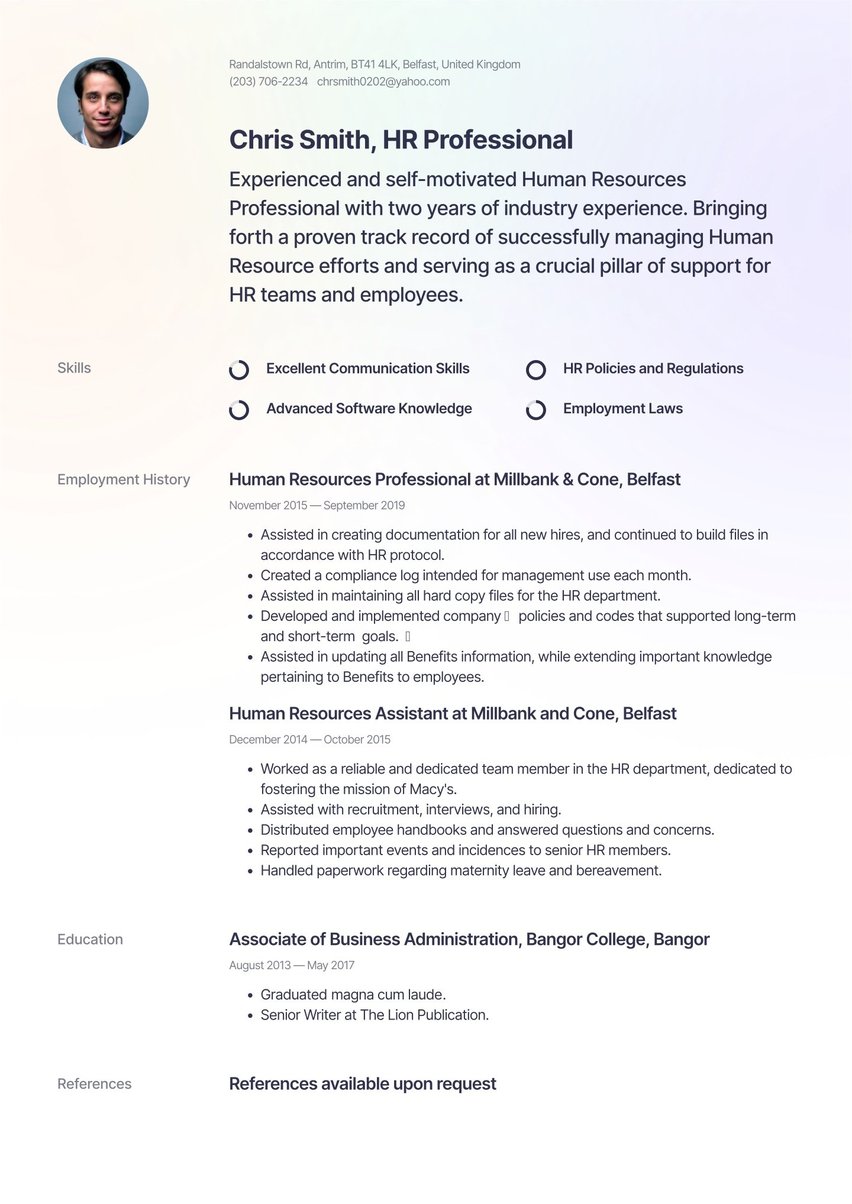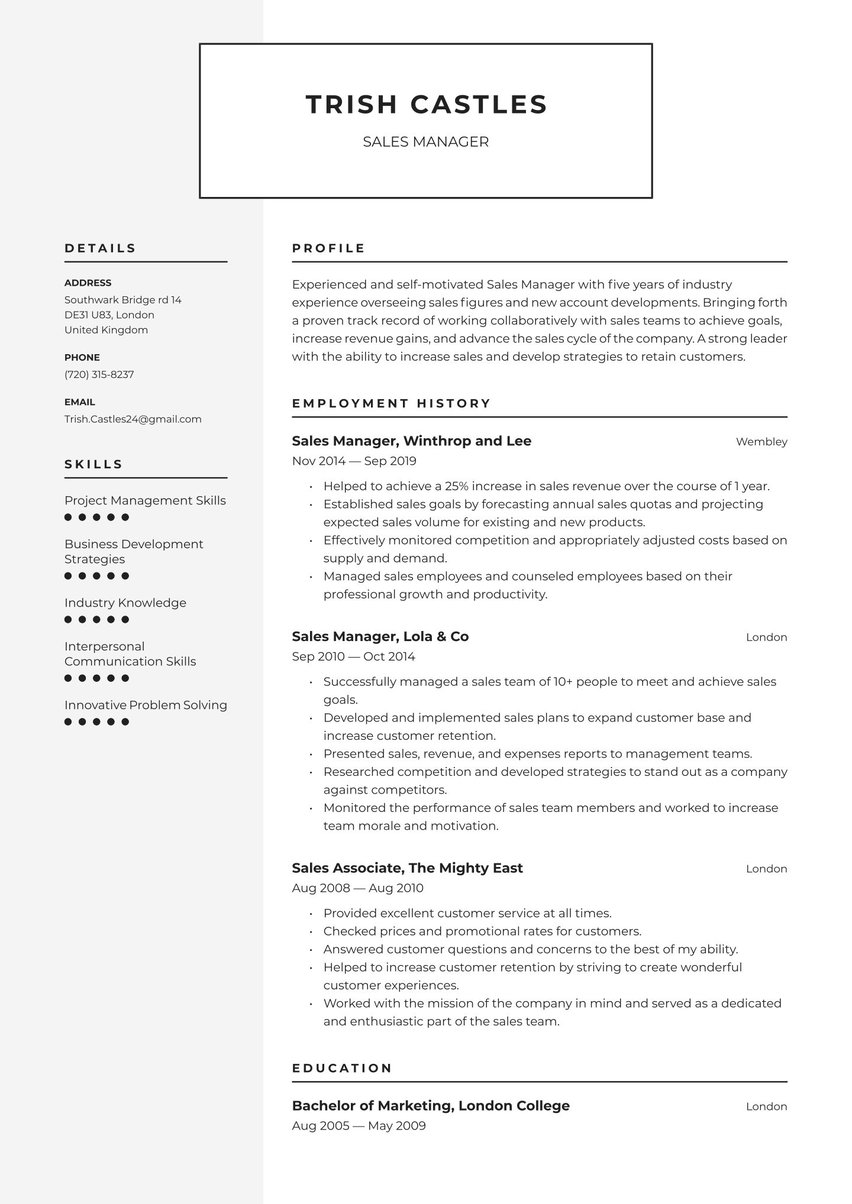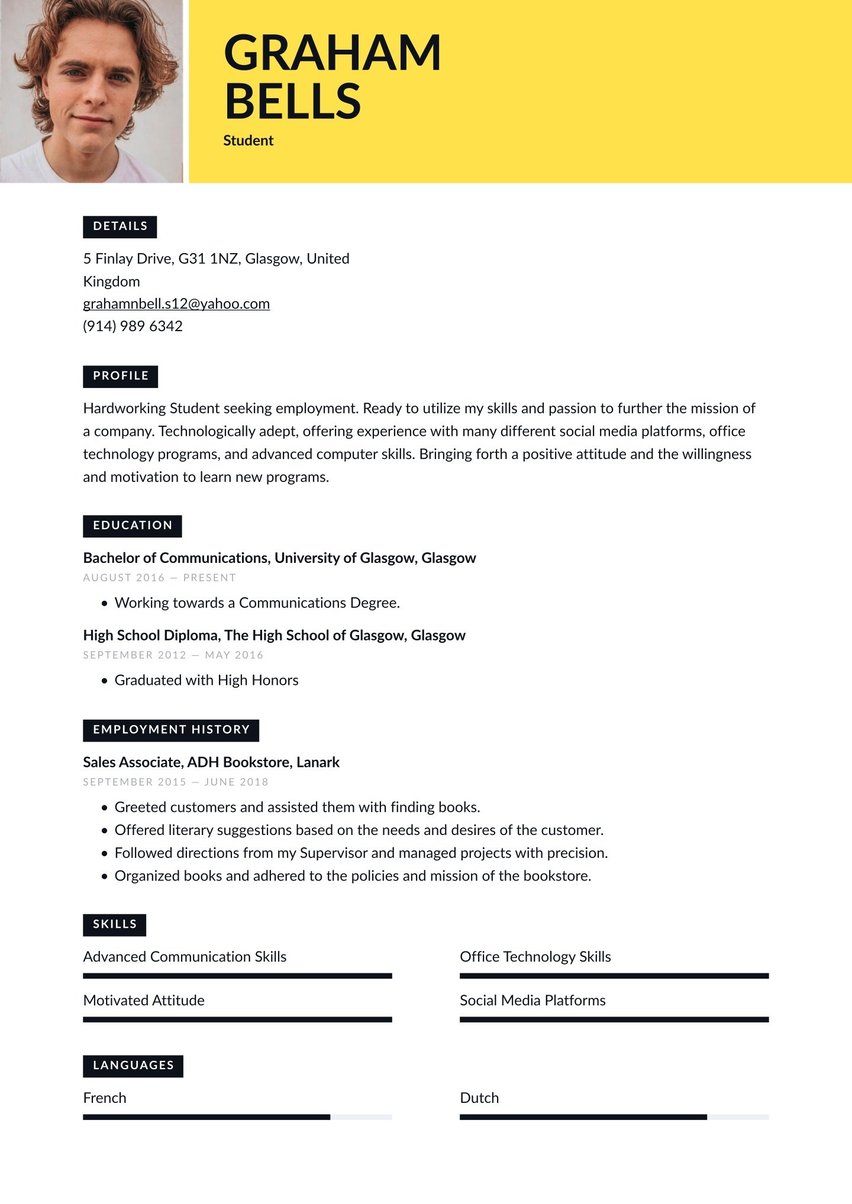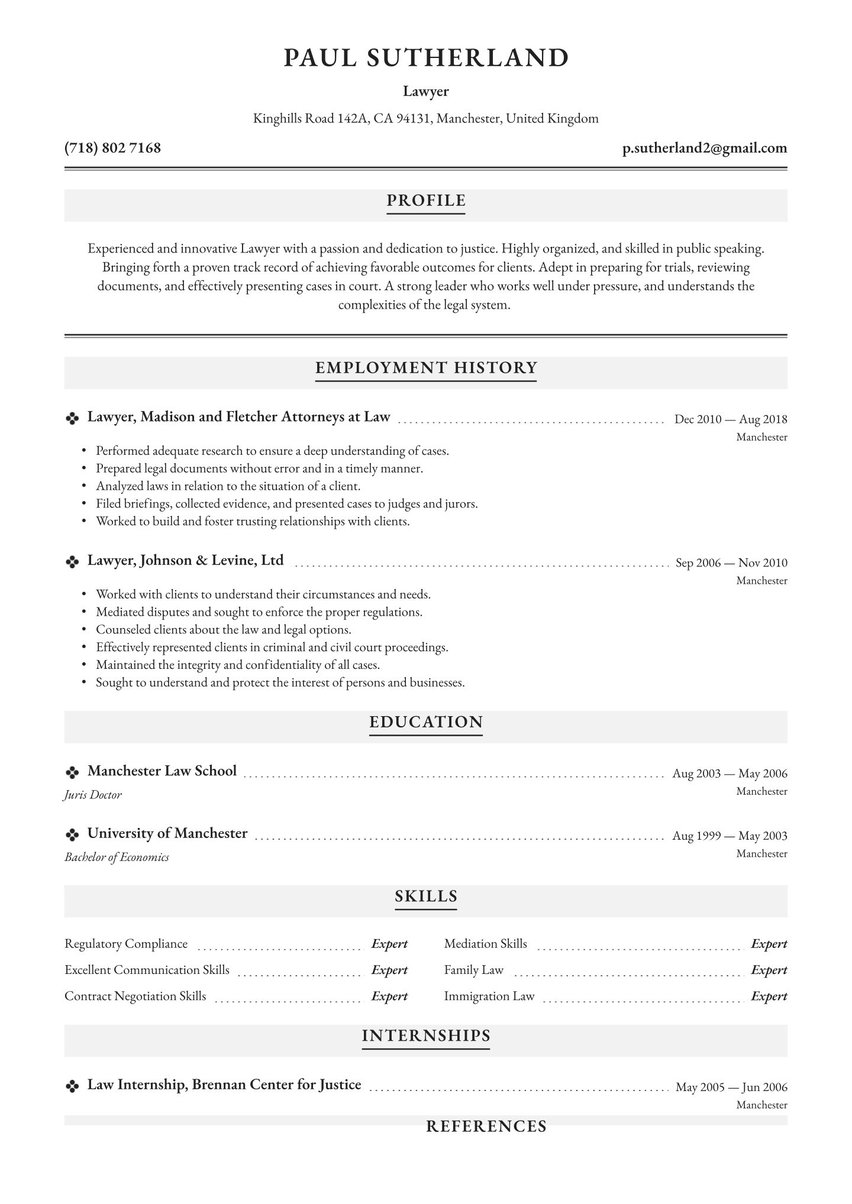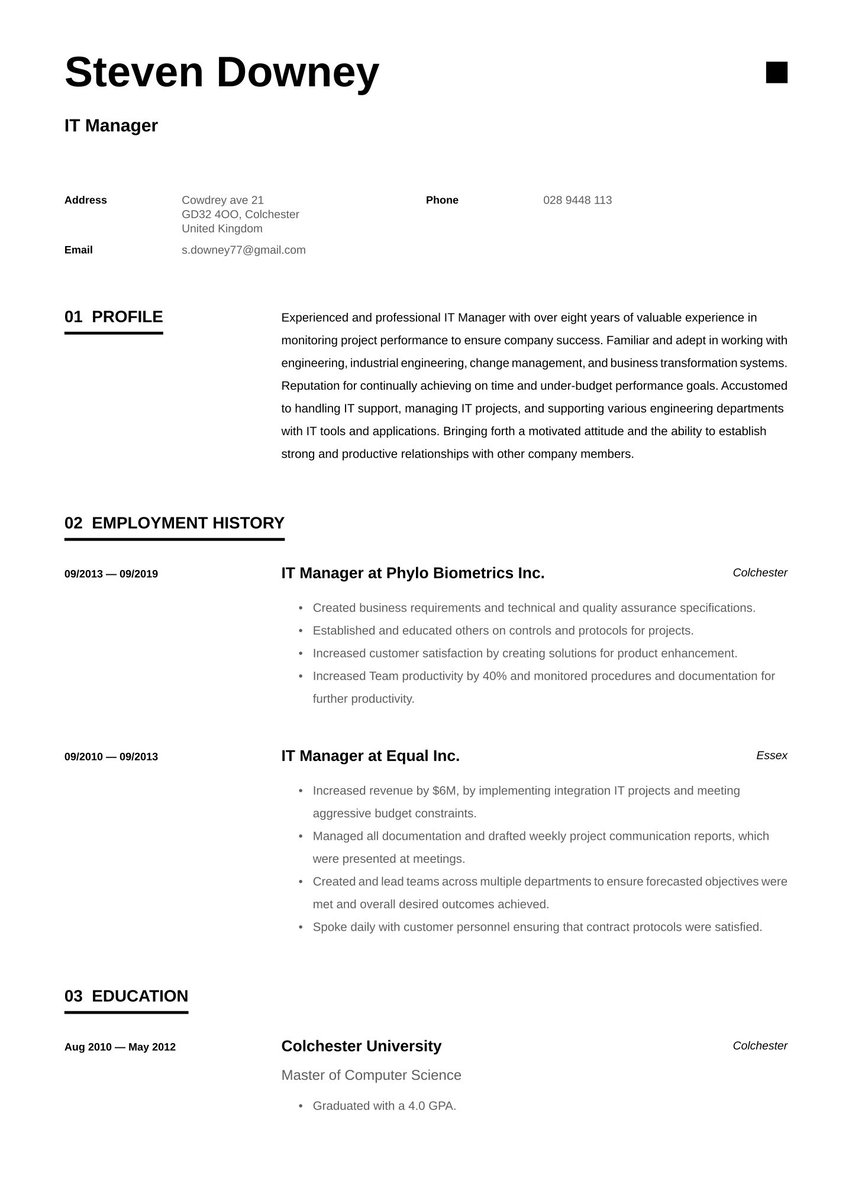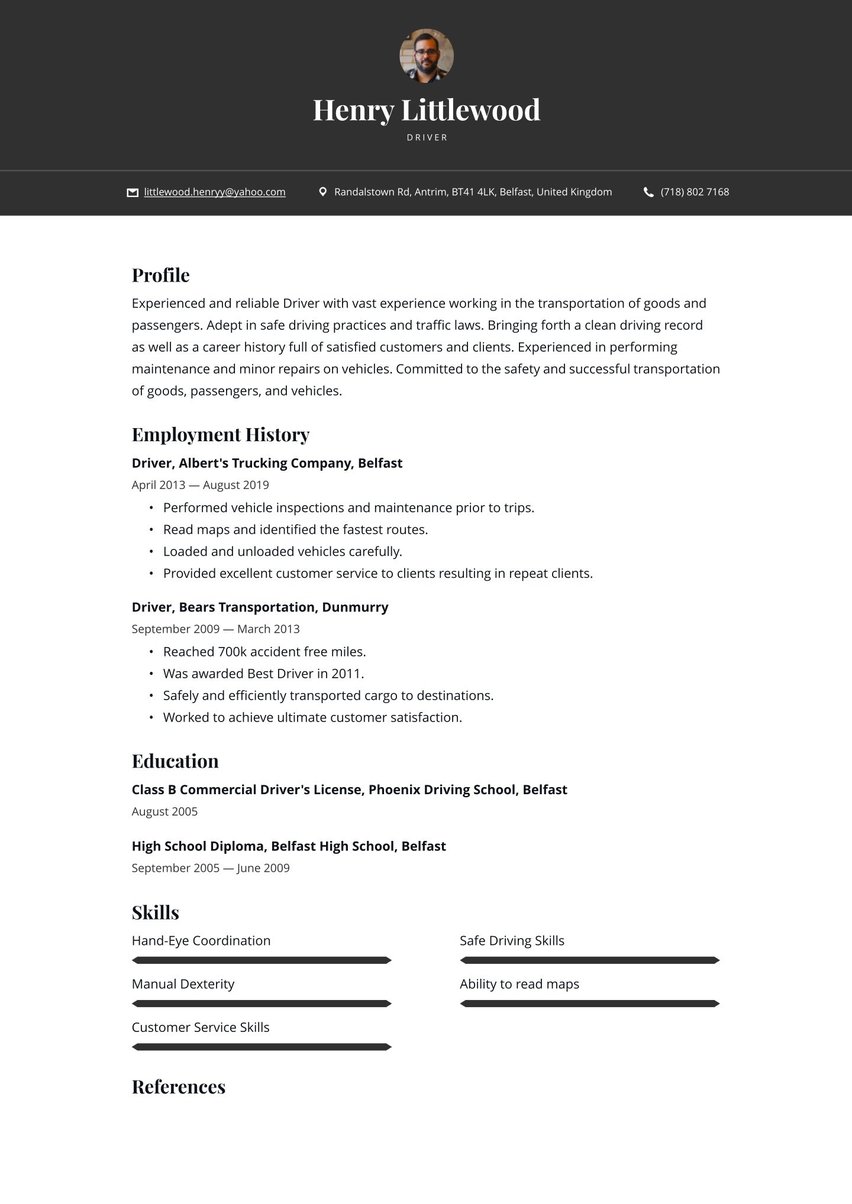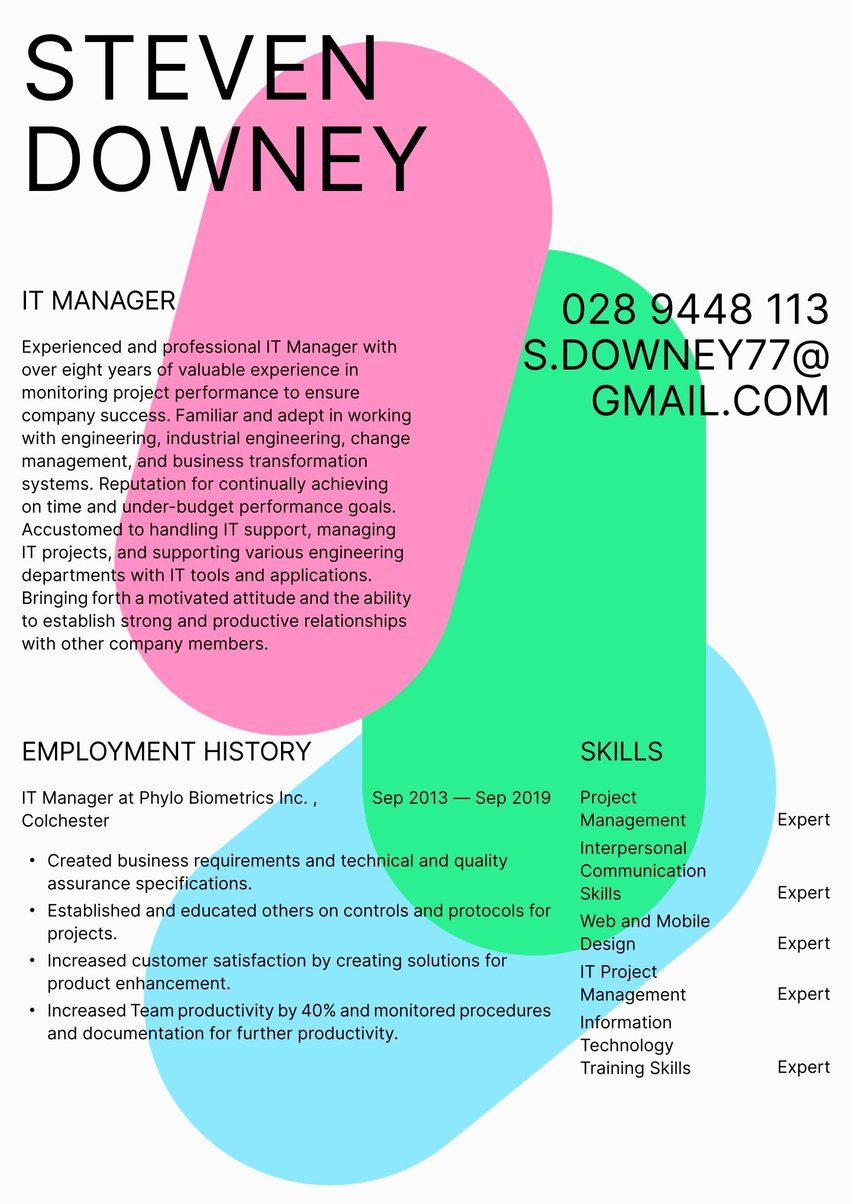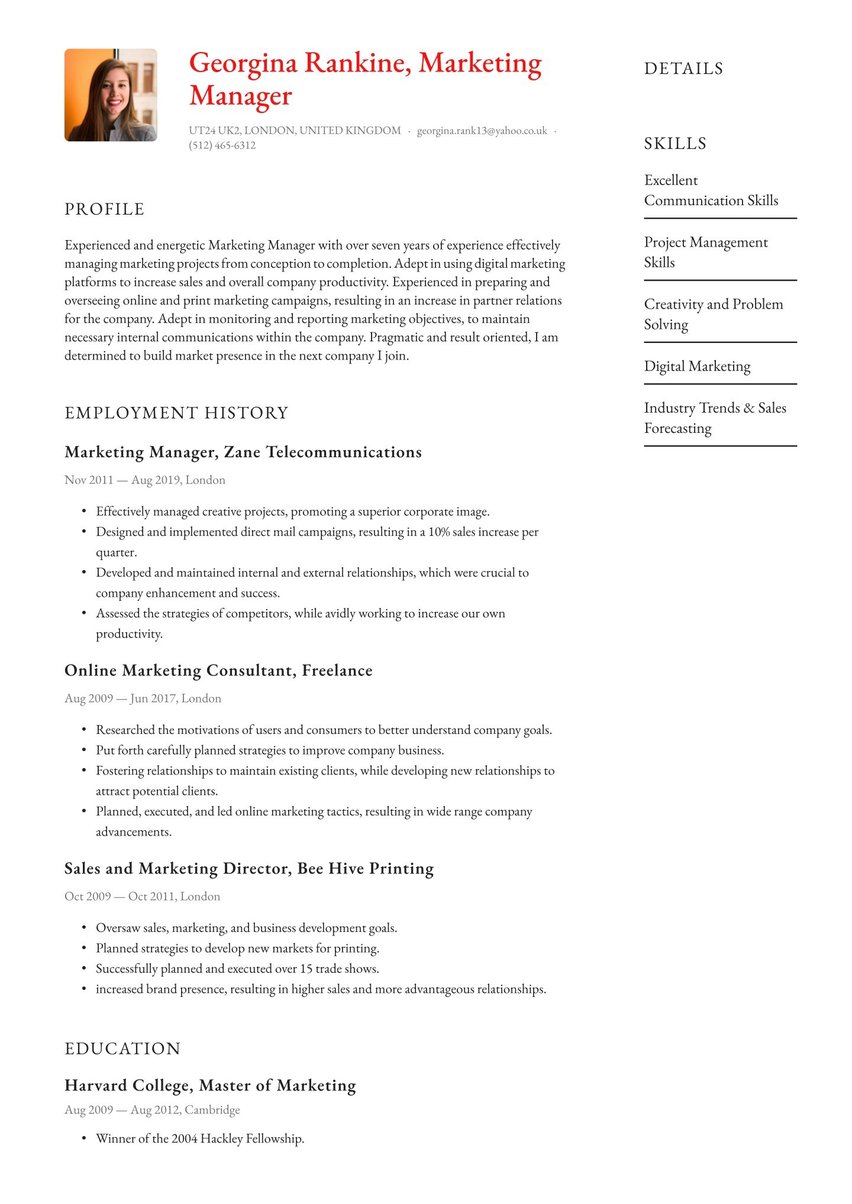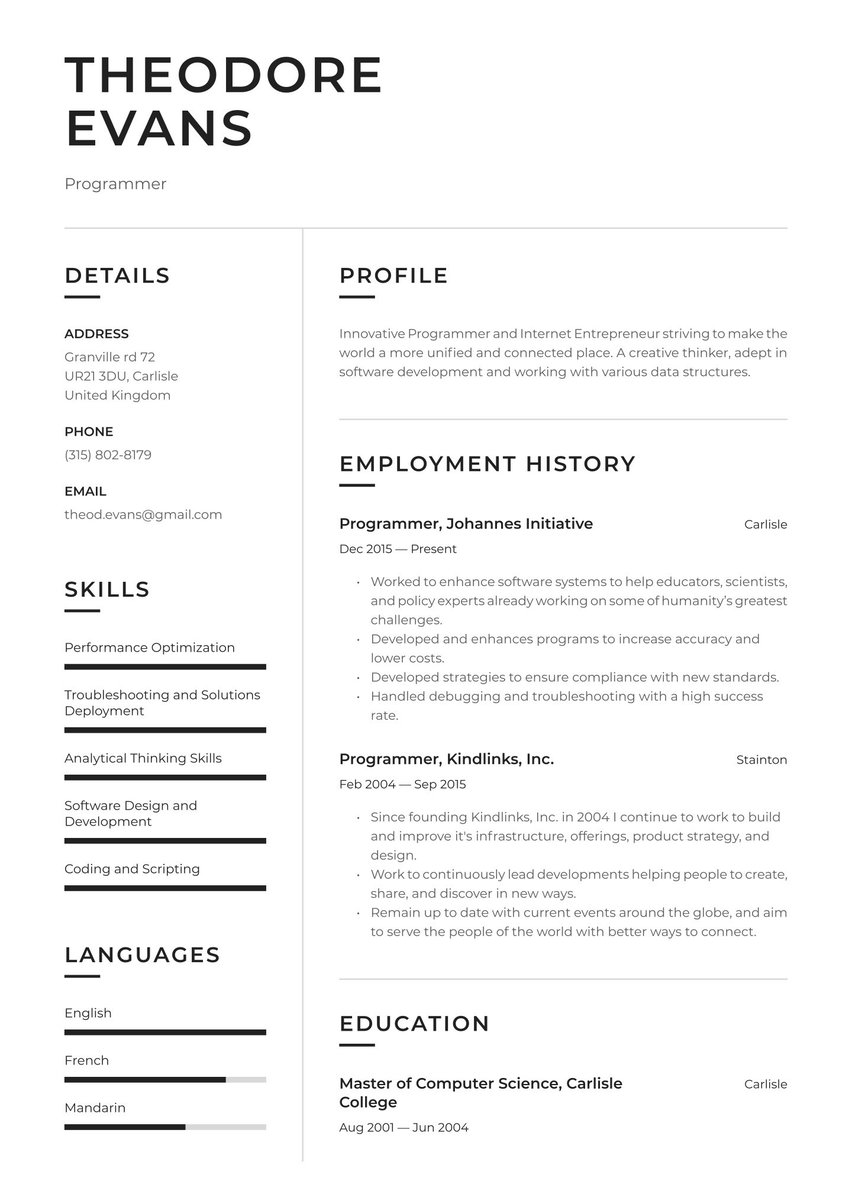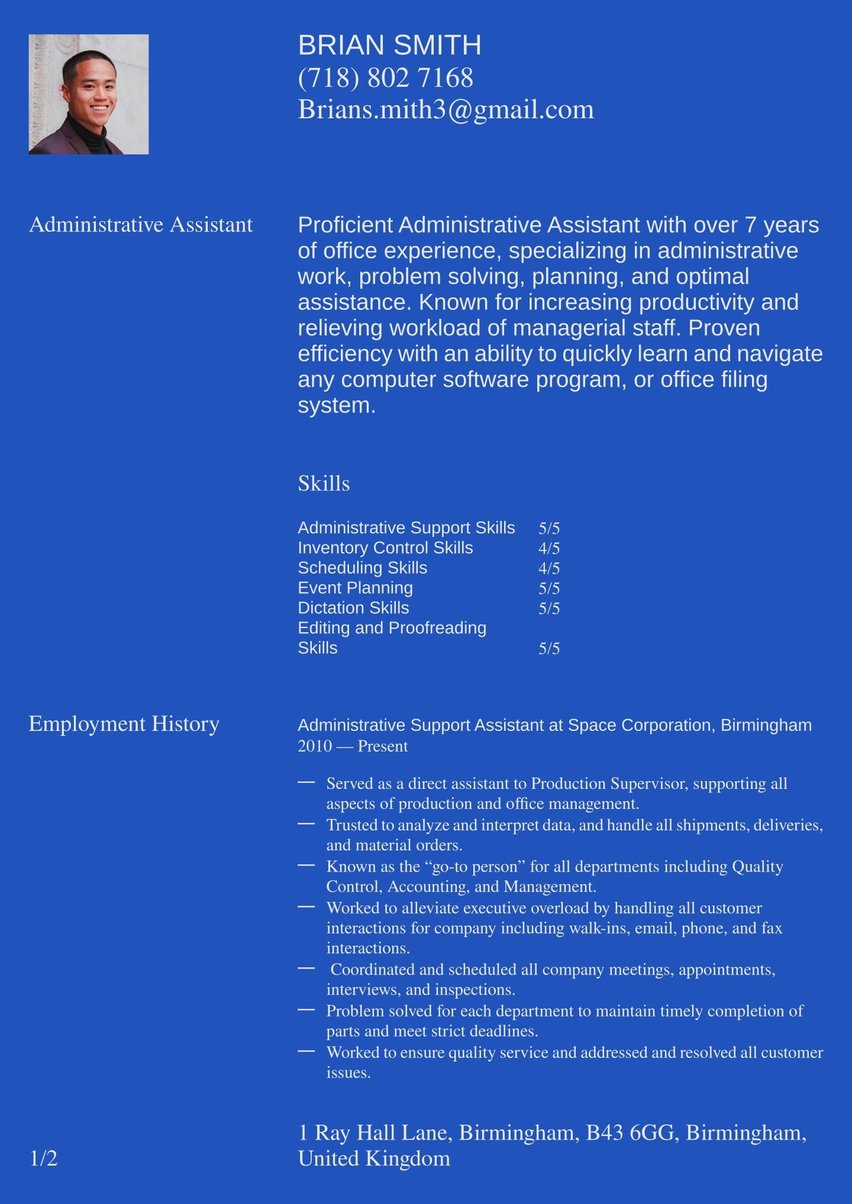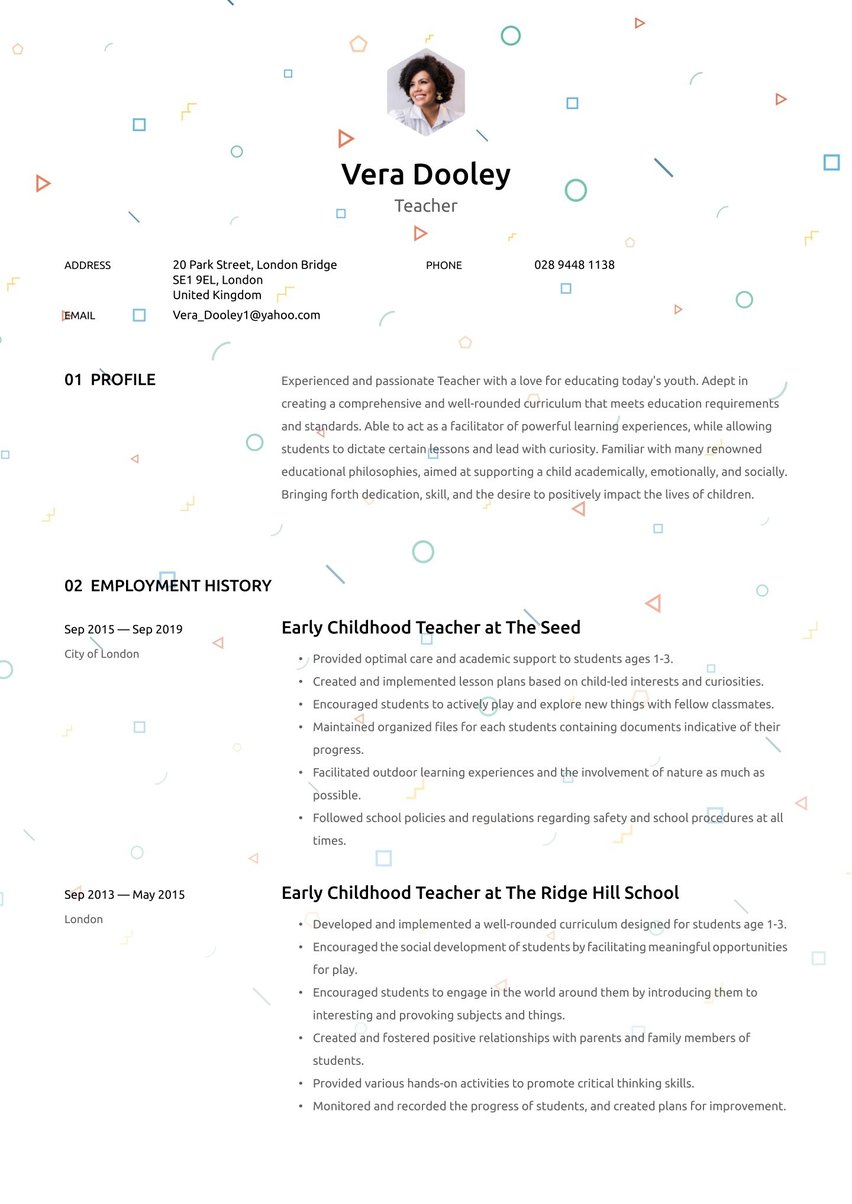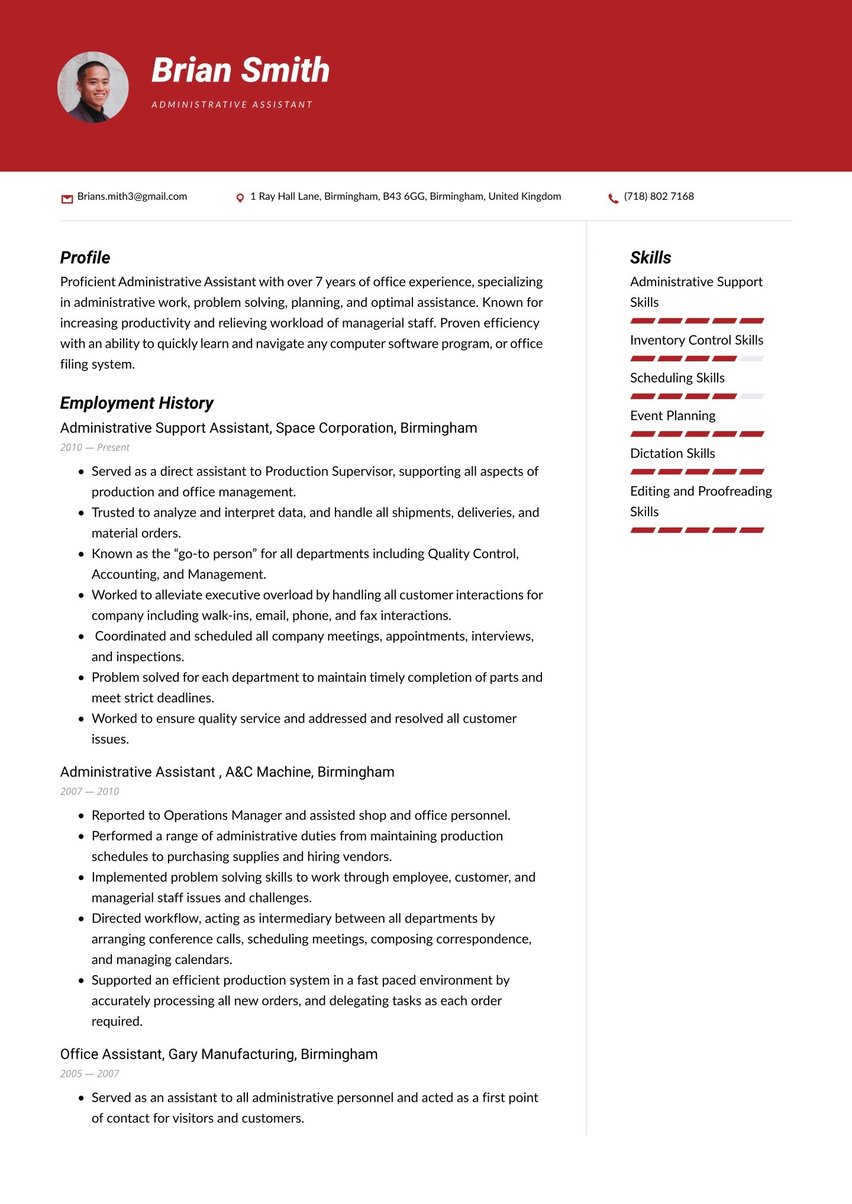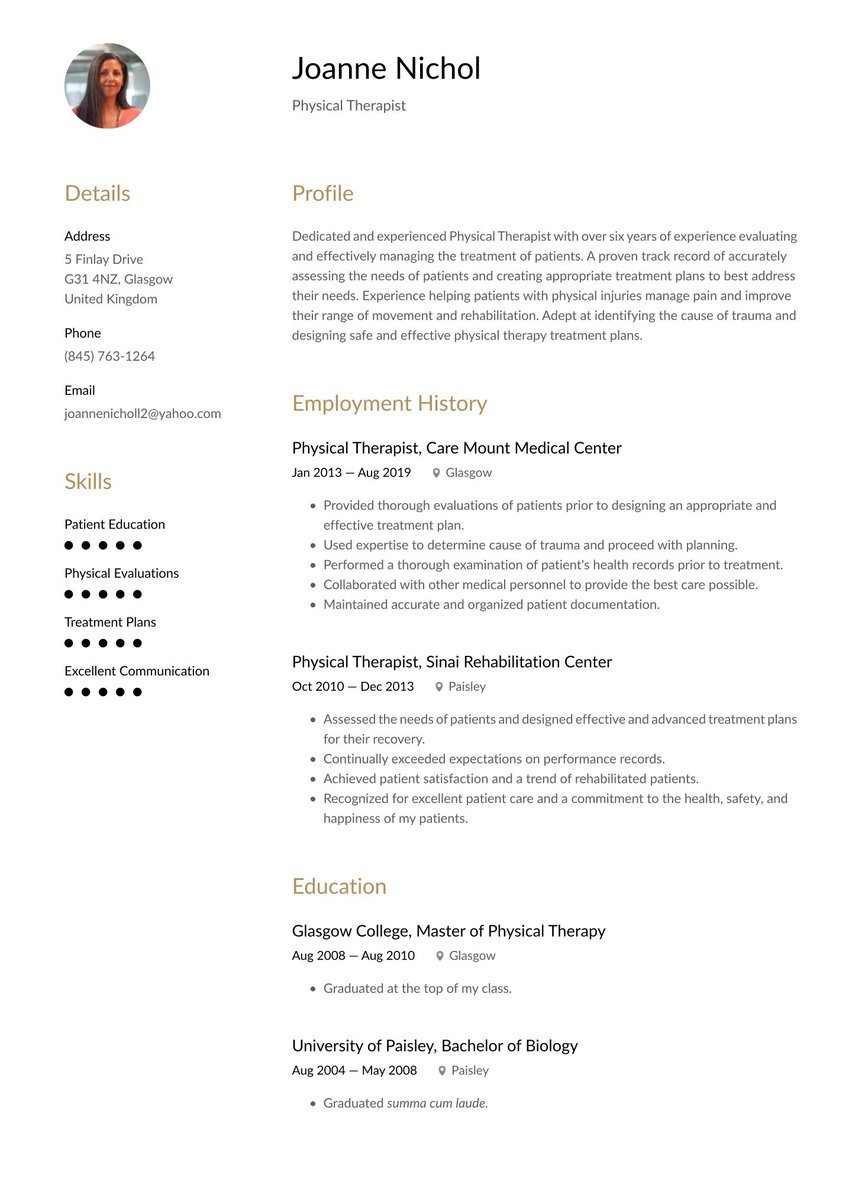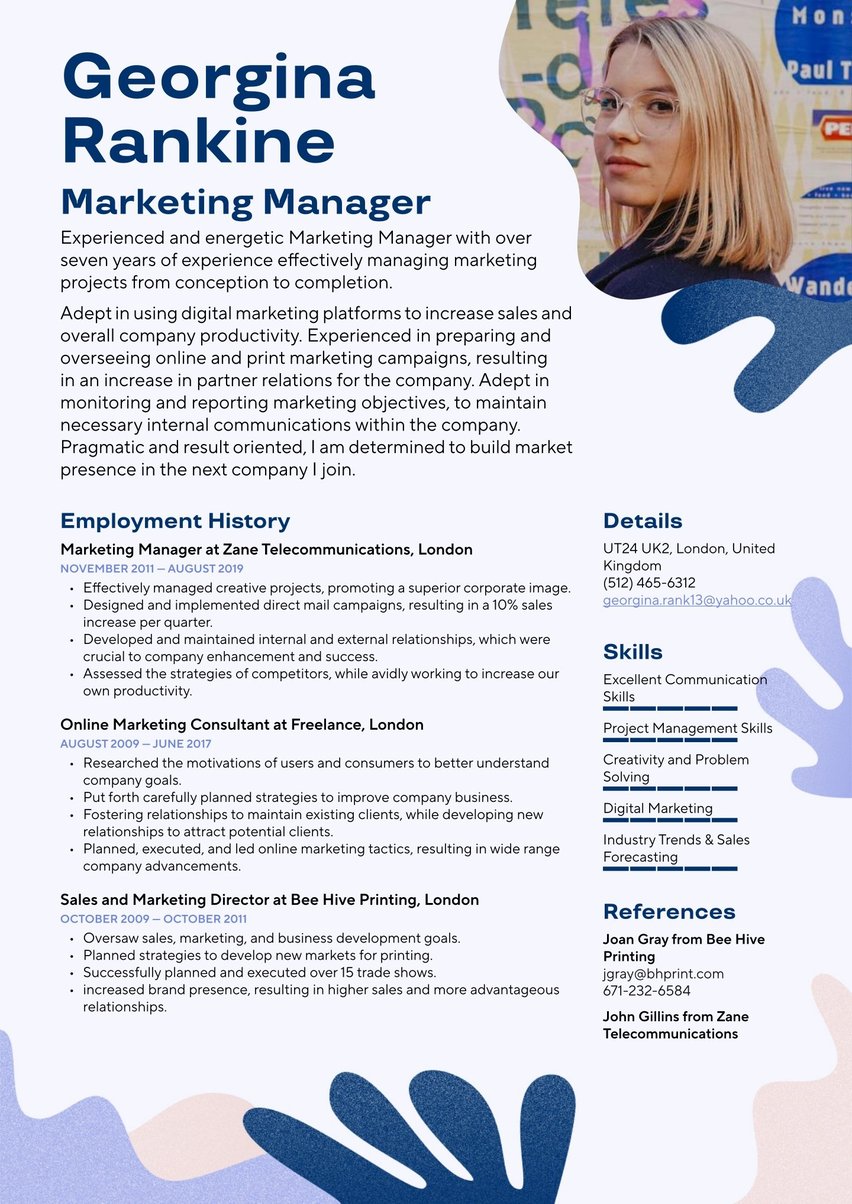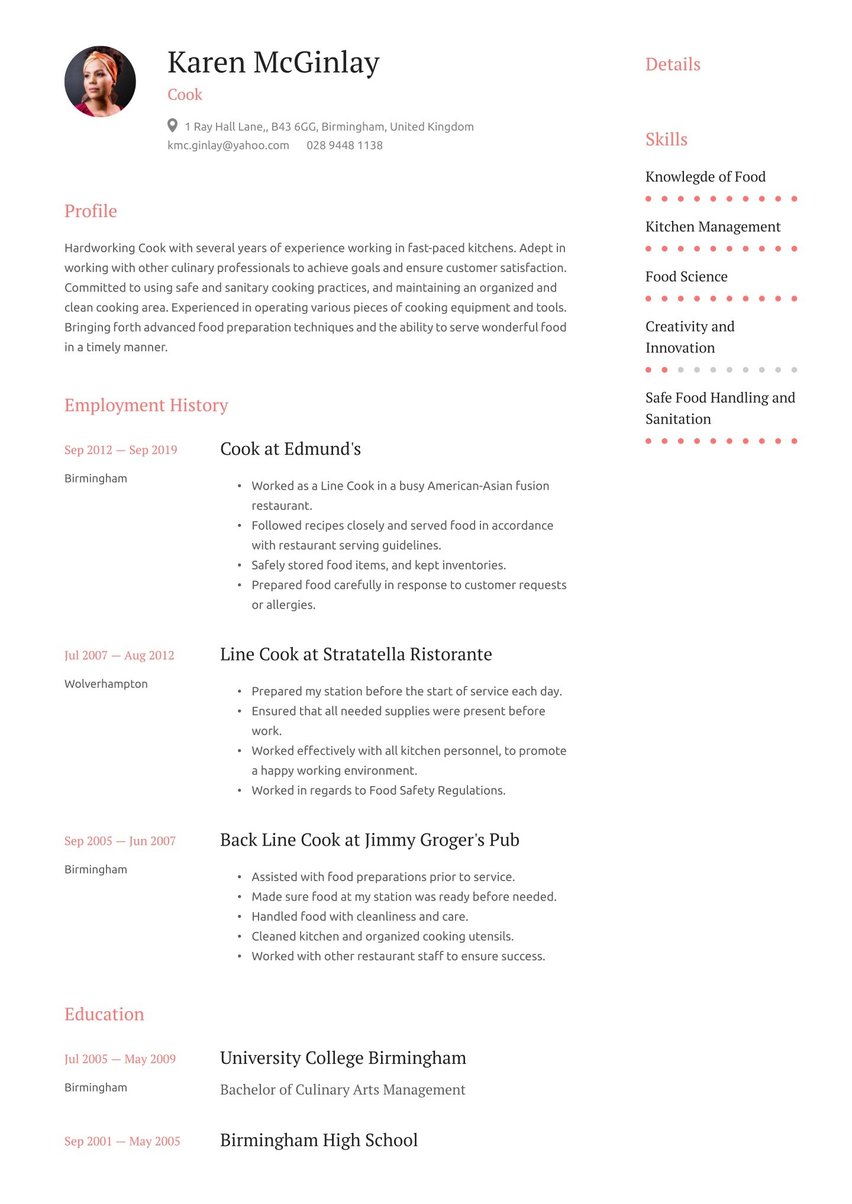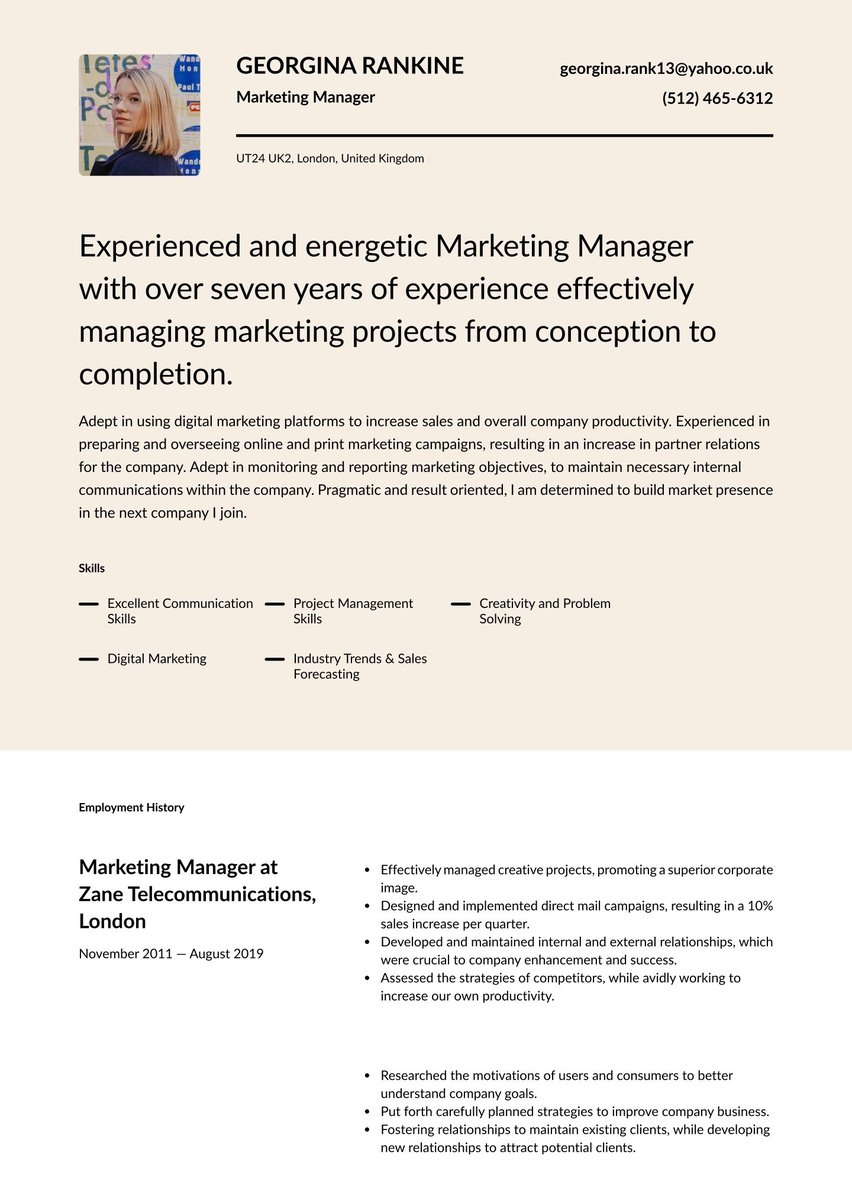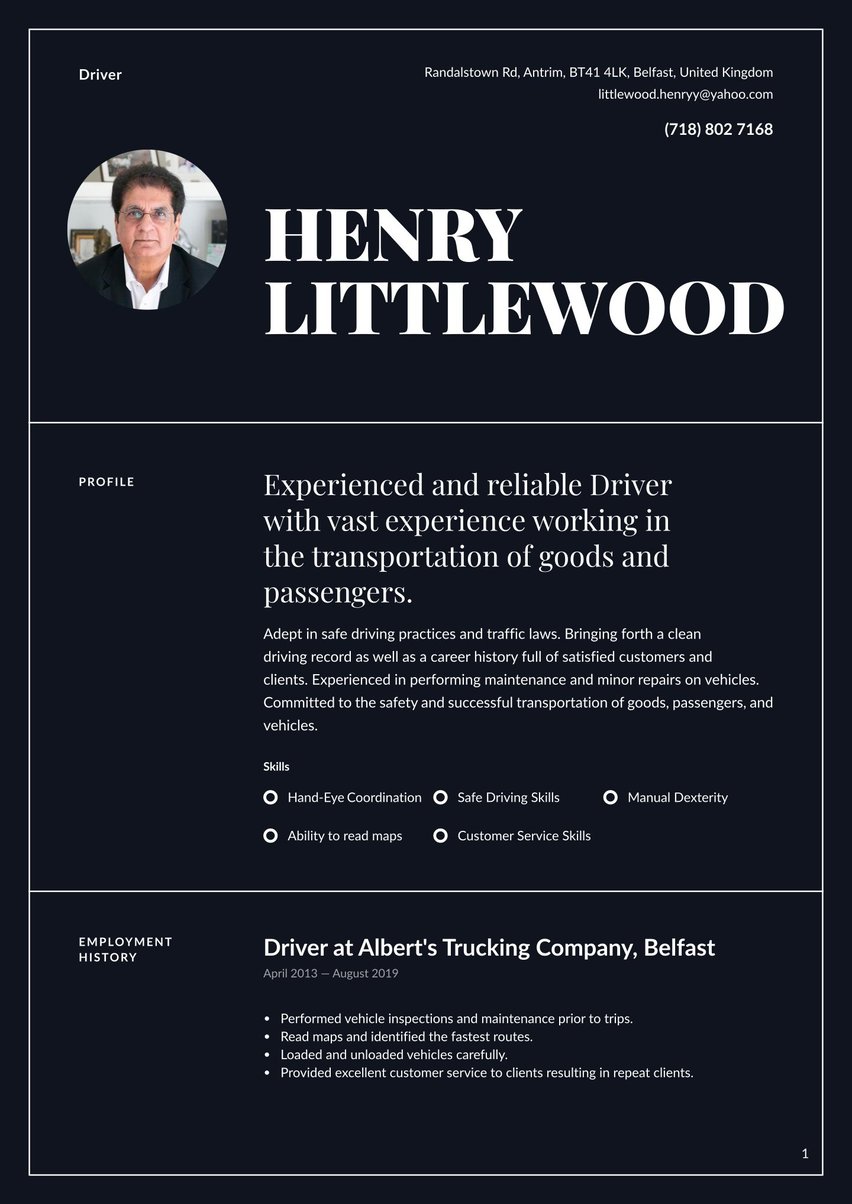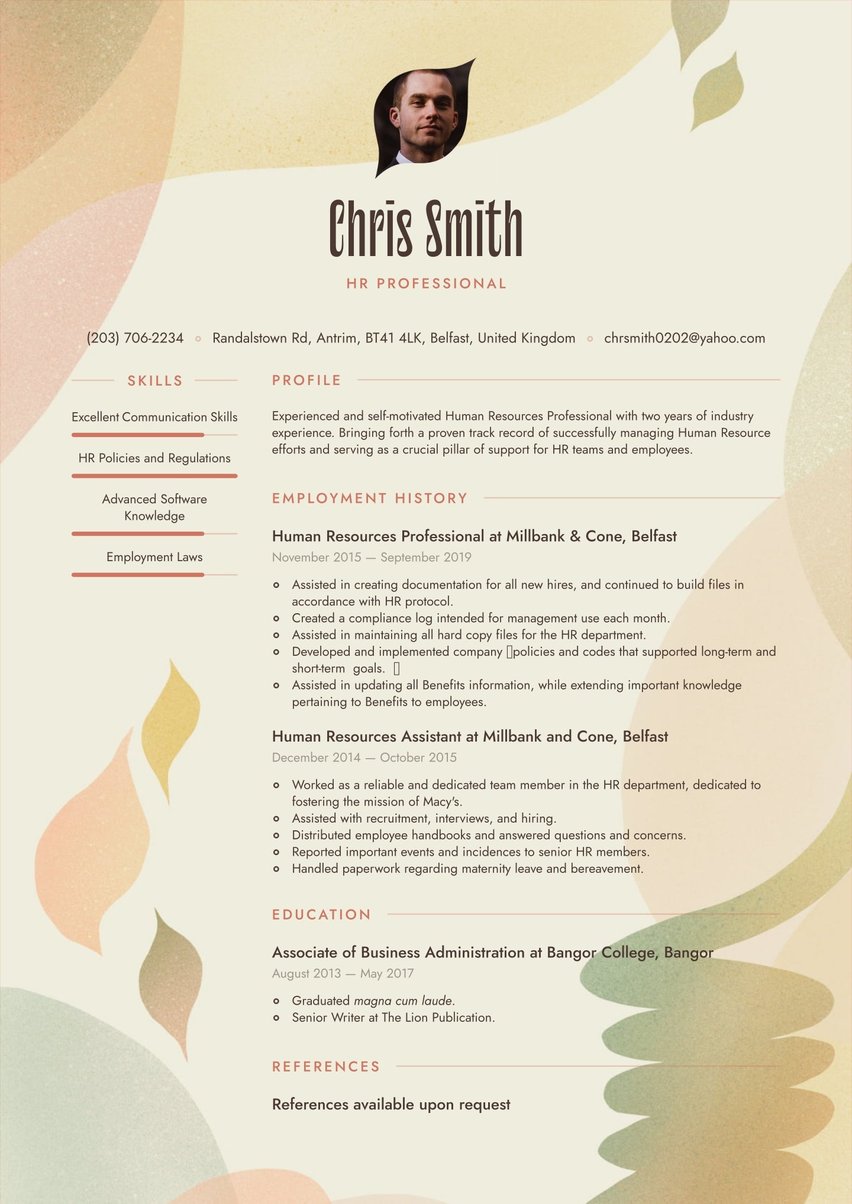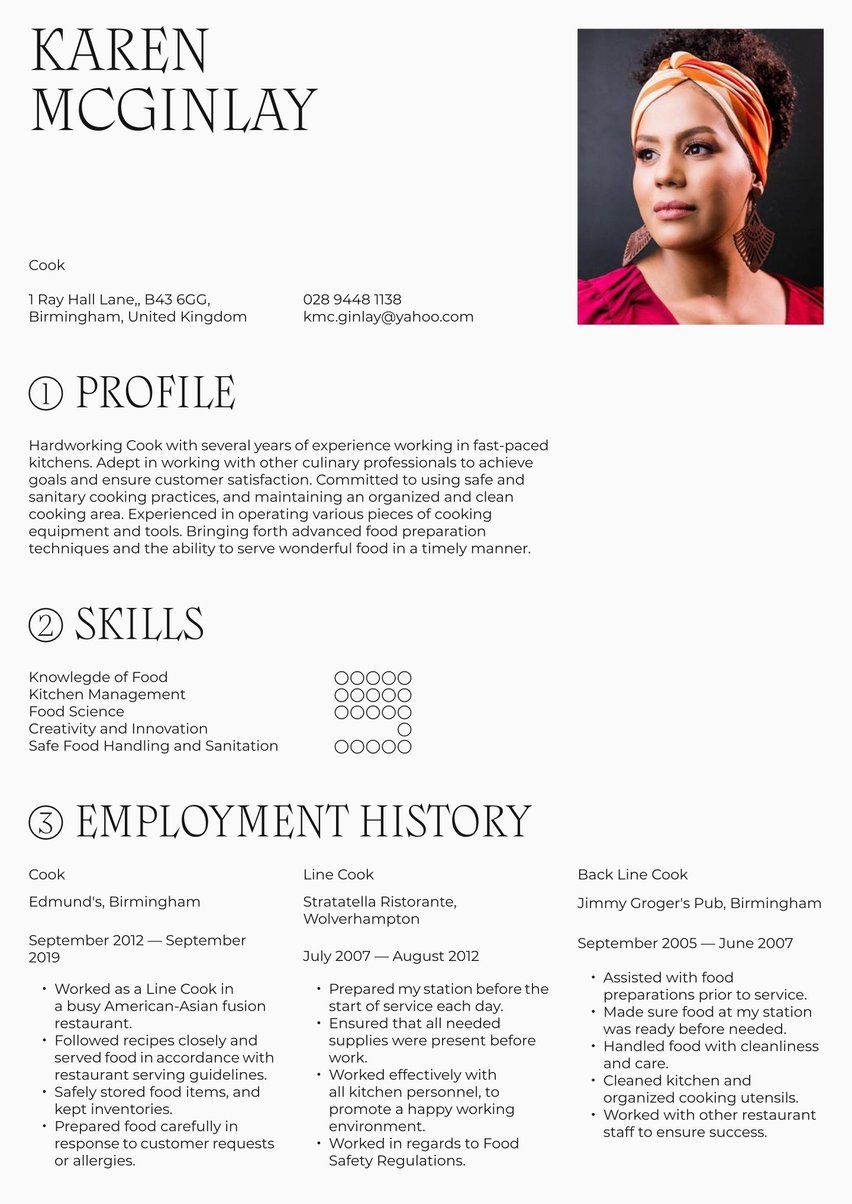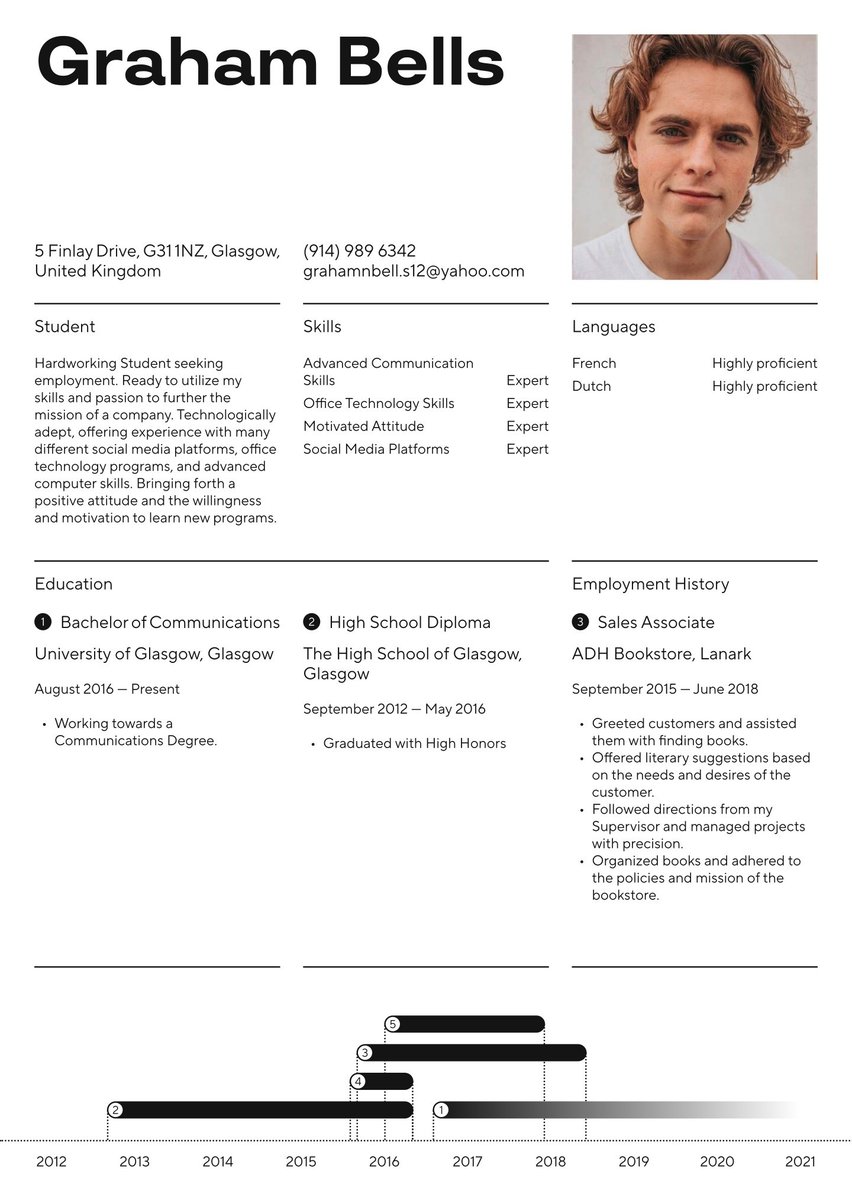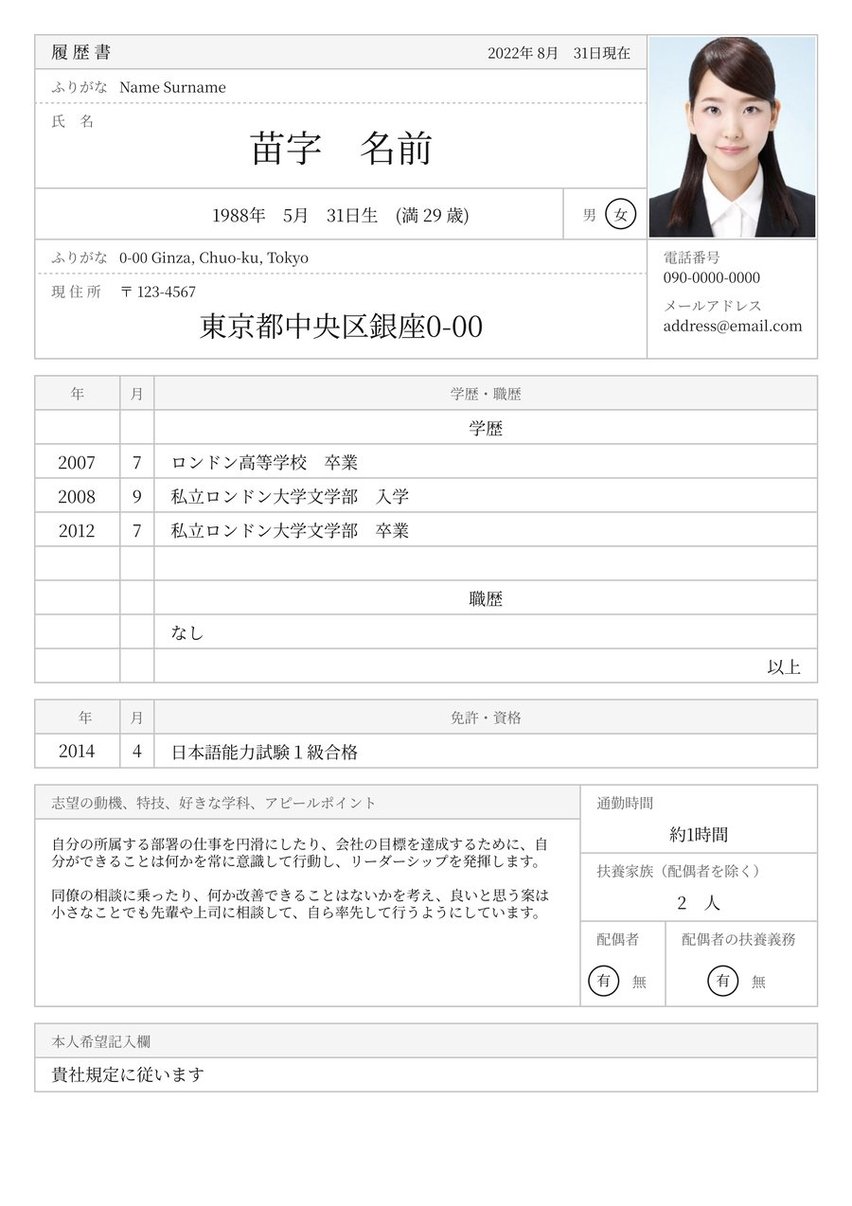Passionate and creative designer with excellent attention to detail, eye for colour, and ability to create aesthetically pleasing assets. Collaborate with other designers, marketers, and clients on large branding and promotional campaigns.
09/2019 - present, Designer, Skylark Designs, Edinburg
- Use knowledge of colour theory, layout, and typography to design appealing creative assets for visual and print media.
- Communicate with clients to understand creative vision and ensure designs adhere to requirements.
- Lead projects to develop new brand identities and revamp existing brands.
- Create websites, landing pages, animated graphics, and other elements.
06/2017 - 07/2019, Junior Graphic Designer, Designs by Dana, Edinburgh
- Assisted designers in creating marketing assets for clients in various industries.
- Reviewed design briefs for colour, layout, content, and other requirements.
- Maintained sample portfolio and collaborated on proposal presentations.
12/2016 - 05/2017, Marketing Intern, Tesco, London
- Proofread and corrected marketing and sales collateral.
- Used Adobe InDesign and Photoshop to assist with newsletter creation.
09/2013 - 06/2017, Bachelor of Arts in Creative Arts & Design, The University of Edinburgh, Edinburgh
- Adobe InDesign
- Adobe Illustrator
- Adobe Premiere Pro
- Adobe Photoshop
- Digital Assets
- Brand Identity
- Social Media
- Marketing Collateral
- Project Management
- Client Communication
Designers are curious about the world, and they are dedicated to creating solutions to improve it. So are you just as dedicated to branding yourself as a seriously strategic hiring choice with a top designer CV?
Resume.io is committed to helping professionals land an interview for their dream job by creating irrefutably excellent job applications. Our free resources include tips and tricks on creating cover letters and — of course — top performing CVs. You can explore our library of professionally written CV examples tailored to dozens of professions. This CV guide, along with the corresponding CV example will cover the following topics:
- What does a designer do?
- How to write a designer CV (tips and tricks)
- The best format for a designer CV
- Advice on each section of your CV (summary, work history, education, skills)
- Professional CV layout and design hints.
What does a designer do?
As a designer, you are a creative professional who combines visual strategy and artistic vision with practical skills. You could do this in a number of industries or mediums. You may be a graphic designer, industrial designer, fashion designer, or even interior designer. Regardless, your role involves understanding clients' or users' needs, conducting research, brainstorming ideas, and translating concepts into tangible designs.
Designers use their observations about the world and convert them into well-considered solutions. That process requires an understanding of concepts like colour theory, layout, typography, and aesthetics to produce visual assets.
You could be working on deliverables such as logos and websites, physical products, or interiors. You likely have expertise in a number of design tools. Ultimately, designers play a pivotal role in creating the visual identity of brands, improving user experiences, and shaping the world around us.
If you’re ready to brainstorm how you can position your previous experience as a designer, you can check out the CV sample content below. For even more ideas, look at our
How to write a designer CV
The very first step in writing your designer CV is understanding what sections to include. Your CV should contain the following elements:
- The CV header
- The CV summary (aka profile or personal statement)
- The employment history section
- The CV skills section
- The education section
As you know, structure and medium has just as much of an impact as the content itself. This is true for your designer CV, too. Whilst the document should impress the hiring manager, functionality is key. Make sure that your CV includes the sections above in order to make it easier for the hiring manager to skim through.
Optimise for the ATS
Another obstacle you will be faced with before getting your designer CV in front of the eyes of the hiring manager is the ATS. The ATS — that stands for Applicant Tracking System — is an algorithmic software which filters only the most relevant of applications to be put in front of the hiring manager.
That means that for your designer CV to actually be read by a human, you need to make sure that you include the most important keywords from the job description.
Choosing the best CV format for a designer
Your CV format is important in making the right impression. The most common CV format is reverse chronological. That’s because it’s the most appropriate way to communicate professional experience for the majority of jobseekers.
The reverse chronological CV format focuses on the previous employment section, where your previous roles will be listed in — you guessed it — reverse chronological order. That means that your most recent experience will be easy for the hiring manager to find by being listed closer to the top of the document.
CV header
Before you start writing the rest of your CV content, it’s important that your CV header is clear and legible. The hiring manager must be able to clearly read your name, your job title, and your contact information. If after reading through your CV the hiring manager decides that you are the designer of their dreams, you want them to be able to call you as soon as possible.
Remember to match the job title in your CV header to the title of the job you are applying for. That means if the job description asks for a “ senior designer” and you can honestly describe yourself as one, then your job title describes yourself in the very same way.
There may be some exceptions if you are transitioning careers or aiming for a promotion.
CV summary example
Your CV summary is a snapshot of who you are as a professional designer. Of course, this snapshot needs to be relevant to the job in question. Choose some key points that are relevant and impressive to highlight for the role that you’re applying to. You can gain some inspiration by looking at the skills and responsibilities that are highlighted in the job description.
Tweak your designer CV for each designer job that you apply to
Different skills will be prioritised differently for each designer role. So make sure that you take the time to adjust each section of your CV accordingly. This is especially important in the summary of your CV example, since it’s the first thing that the hiring manager will read.
If you need some ideas on how you can frame your skills and experience to make it as snappy as possible, check out the CV sample content below.
Passionate and creative designer with excellent attention to detail, eye for colour, and ability to create aesthetically pleasing assets. Collaborate with other designers, marketers, and clients on large branding and promotional campaigns.
Employment history sample
Your employment history section will be the focus of most designer CVs, assuming you’re using the reverse chronological format. List your most recent professional experience at the top of the section and work your way backwards. Each job you list should include the job title, company name, dates of employment, and location.
What does the designer community look like?
Design platform Dribbble shared in 2022 that over 83% of global designers are under 35 years old. If that’s you, you should aim to keep your CV to one page when possible.
For each position listed, include several bullet points that break down the most important aspects of your job. Remember, the importance of the examples you choose to talk about is measured by how relevant it is to the position that you’re applying to.
Some ideas of what you can write here include your top achievements during your time in the role, pertinent responsibilities, and even client feedback. Remember to use those all-important keywords that you identified in the job description.
Designer at Skylark Designs, Edinburg
September 2019 - Present
- Use knowledge of colour theory, layout, and typography to design appealing creative assets for visual and print media.
- Communicate with clients to understand creative vision and ensure designs adhere to requirements.
- Lead projects to develop new brand identities and revamp existing brands.
- Create websites, landing pages, animated graphics, and other elements.
Junior Graphic Designer at Designs by Dana, Edinburgh
June 2017 - July 2019
- Assisted designers in creating marketing assets for clients in various industries.
- Reviewed design briefs for colour, layout, content, and other requirements.
- Maintained sample portfolio and collaborated on proposal presentations.
Marketing Intern at Tesco, London
December 2016 - May 2017
- Proofread and corrected marketing and sales collateral.
- Used Adobe InDesign and Photoshop to assist with newsletter creation.
Quantify your achievements
Data and design often work together to create excellent solutions. The hiring manager is likely to think in the same way. So, if you can attach numbers to your achievements you are doing part of the hiring manager’s job for them. Help them to imagine the types of results that you could bring to this role. This could include money saved, percentage of happy clients, or anything similar that you can attach a number to.
CV skills example
The skills section of your CV is important in reaffirming how the hiring manager should consider your professional profile. So make sure you take a look at the most important responsibilities and skills for the job and update your skills section accordingly.
Don’t simply scribble down any skills that make you a designer. Take the time to order the skills the job asks for by how important they are to this role.
Your CV skills section should also aim to include those keywords that the ATS will be looking for. However, always keep it honest. If a keyword doesn’t apply to you, find a way to include it that is truthful or simply leave it out.
Look at the CV sample content below to see how it’s done.
- Adobe InDesign
- Adobe Illustrator
- Adobe Premiere Pro
- Adobe Photoshop
- Digital Assets
- Brand Identity
- Social Media
- Marketing Collateral
- Project Management
- Client Communication
According to a 2022 industry report released by designer platform Dribbble, business skills were identified as a top critical skill for designers to advance their career.
Designer CV education example
Your education is an important part of your story as a designer, regardless of the training you do — or don’t — have. If you have a higher education degree there’s no need to list your secondary education. This section should also be in reverse chronological order with the qualification, institution name, dates attended, and location listed for each.
In this section you can include a bullet point if you have any truly impressive accolades linked to your time in your studies. However, if you have enough things to mention that fall under a single category— such as awards and accolades — you can consider adding a new section dedicated just to this under a different subheading.
Bachelor of Arts in Creative Arts & Design at The University of Edinburgh, Edinburgh
September 2013 - June 2017
CV layout and design
You may know a thing or two about design, however, remember that the visual communication of your designer CV is about showing that you are the professional for this particular job. This involves considering the type of working environment that you are applying to and the style they will respond to. Of course, functionality is important above all else. The content of your CV should always be presented in a clear and legible manner.
If you want to save time but still have confidence that your visual communication hits the mark, consider checking out our variety of professionally designed CV templates. The designer in you can rest assured that the visuals will do justice to your professional skills. That way you can concentrate on the part that only you can do best — writing the contents of your killer designer CV!
Key takeaways for a designer CV
- Designers blend creativity and practical skills to come up with innovative solutions. Your CV should do the same!
- While your CV should show your creativity, respecting the standard structure by including the correct sections in your CV is important.
- Show off the most impressive points of your profile as a designer by writing a concise and engaging summary.
- Every step of the way, make sure you are aligning the way you present yourself as a designer with the specific job that you are applying for in mind.

